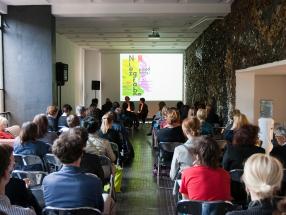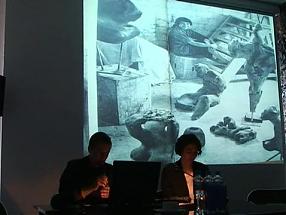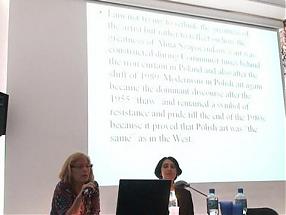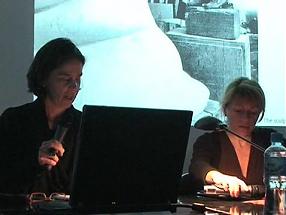Alina Szapocznikow Documents. Works. Interpretations
Griselda Pollock
My question is: what would it mean to become a sculptor, working on the human figure ‘after Auschwitz’?
Is it, was it possible? In what ways might we trace the traumatic encryption of the agonisingly bodily event and physical assault involved in the attempted genocides of Jewish and Roma/Sinti peoples of Europe, that personally affected Alina Szapocznikow as a child and teenager, in the trajectory of her turn to carving and restoration of sculpture and then the emergence of diverse strategies which increasingly problematized the integrity of the sculptural body and eventually produced a form of sculptural object in which mnemic traces of suffering and the past were embedded in the detached resin-skins of works made during another, gendering and psycho-sexually traumatic encounter with the assault on the body of mortal illness and premature dying? This question will be framed by a larger exploration of the representation of the body as site and signifier of both pathos and abjection through the emergence of new sculptural materialities, notably explored by artists who were women ca 1965-75. The aim is to identify a historical and personal traumatic specificity in Alina Szapocznikow’s artworking (Ettinger) as unconscious working-through that exhibits the structure of trauma (event, latency, return of the repressed) which, none the less, resonates with a larger, internationally visible cultural registration of a post-traumatic aesthetic disruption to the western figuration of the body (idealized projection and identification), engaging with the bodily (semiotically creative and abjected) and the corpo-real (archaic and pre-imaginary psycho-sexual registers of subjectivity). I aim to articulate current psychoanalytically-informed explorations of the aesthetic and the traumatic with emerging art historical re-definitions of the sculptural events created by women in the 1960s and early 1970s. Is there any significance in this configuration of the material innovation, the post-traumatic and the feminine in aesthetic practice at this moment when Alina Szapocznikow was both too early and too late?



